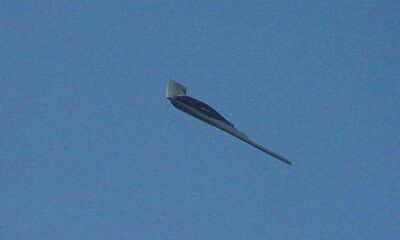Civilization
The Pentagon Needs a Quantum Strategy
A U.S. Congresswoman recommends supporting an initiative to develop quantum computing as a Defense Advanced Research Project.

As our adversaries across the globe become increasingly emboldened, it has never been more critical that America maintain its technological edge by investing in quantum computing. Air Force Research Lab’s Information Directorate in Rome, New York, has long been the epicenter of the Air Force’s quantum information science research and development efforts. For years, the lab has worked diligently to conduct critical applied research across many quantum technologies and drive the Air Force’s ability to maintain superior information technological advantage against our adversaries. It is time the Department of Defense (DoD) did the same. As quantum advantage approaches, we must prepare for it by ensuring our quantum computers are industrially useful and able to solve critical operational problems for the DoD.
Quantum computing – a ready-made project
In pursuit of this goal, the DoD must execute three critical lines of effort. First, it must fully embrace, and Congress must fully fund, the Defense Advanced Research Projects Agency’s (DARPA) Quantum Benchmarking Initiative (QBI) program. This program, in partnership with AFRL-Rome’s systems engineering and broad quantum expertise will benchmark industrial efforts to build a useful quantum computer. This novel effort has yet to be conducted anywhere else across government. DARPA’s innovative approach to running the QBI program is the most significant federal work done in quantum computing to date and must be fully supported within the DoD and by Congress.
Second, the DoD must craft and execute a strategic framework to guide its approach to follow DARPA’s effort. If quantum technologies are to become an integral component of our defense arsenal, the DoD must develop a deliberate approach to the development, prototyping, and scaling of quantum capabilities to solve operational problems. My language in this year’s House-passed National Defense Authorization Act (NDAA), would accomplish this by requiring the DoD to develop such a strategy in pursuit of this goal. It will be critical for the Senate to support this language and ensure it is included in this year’s final NDAA.
Keeping a technological edge
Third, it is imperative the DoD holistically engage with the quantum industrial ecosystem, academia, and interagency. Formed between AFRL-Rome, Brookhaven National Lab, industry partners large and small, and a robust system of universities and community colleges, the Empire State Quantum Network being formed in Upstate New York is a model for DoD to engage partners of all types to fully embrace quantum technologies.
Through the incredible work being done by DARPA, AFRL-Rome, and the U.S. quantum innovation ecosystem, we are getting closer to reaching that goal. By developing a ready quantum workforce, software applications, algorithms, and other capabilities in addition to hardware, we will fast-track the building of an industrially useful fault-tolerant quantum computer and maintain technological advantage over our adversaries.
This article was originally published by RealClearDefense and made available via RealClearWire.
Rep. Elise M. Stefanik represents New York’s 21st congressional district. She is the House Republican Conference chair, and chair of Women for Trump.
-

 Civilization3 days ago
Civilization3 days agoDC Pipe Bomb Arrest Raises Questions About Christopher’s Wray’s FBI
-

 Civilization4 days ago
Civilization4 days agoThe Legal Logic Behind U.S. Operations Against Narco-Terrorist Networks
-

 Executive4 days ago
Executive4 days agoNewsom’s ‘National Model’ for Homeless Wracked by Fraud
-

 Executive3 days ago
Executive3 days agoWhen You’re in a Hole, Stop Digging
-

 Education3 days ago
Education3 days agoWaste of the Day: Taxpayers Subsidize Football Coach Severance
-

 Executive2 days ago
Executive2 days agoWaste of the Day: Obamacare Failed Test, Approved Fraudulent Subsidies
-

 Civilization2 days ago
Civilization2 days agoPence Calls on Trump To Fire RFK Jr Over Abortion Drug
-

 Executive4 days ago
Executive4 days agoWaste of the Day: Feds Pay Nonprofits That Sue the Government












